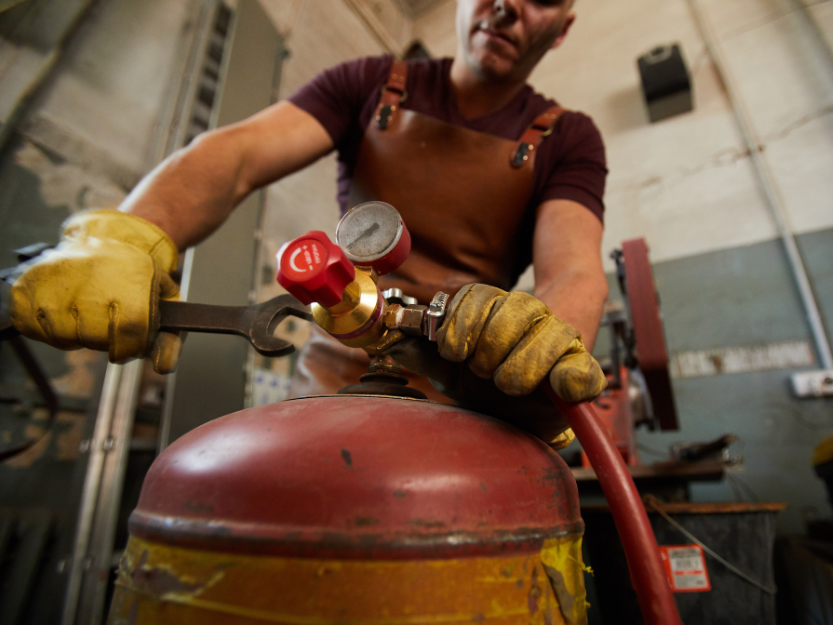Compressed air is called “the fourth utility” in manufacturing, because so many operations depend on it. It is also often one of the most expensive utilities to produce: leaks, poor maintenance, improper use and outdated system design can drive up energy costs fast. That’s why keeping your operation’s compressed air system in tip-top shape can make a big difference to your bottom line.
Even when operating at ideal conditions, compressed air systems are remarkably inefficient. Only 10%-15% of the consumed electricity goes to compressed air, with the rest lost as heat. For industrial facilities, this means over 75% of the total lifetime costs of a compressed air system go to the electricity it takes to run the compressor. Lowering consumption isn’t just energy smart — it can save substantially on operating costs.
The hidden cost of air leaks
Compressed air leaks are a costly form of waste. Over time, compressed air systems develop air leaks from a variety of factors including wear and tear, fittings and joints loosening, and components becoming corroded and rusty.
- Leaks can account for 20%-30% of compressor output, causing your compressor to overcompensate and generate compressed air beyond what is needed.
- Tiny leaks add up. Even a leak as small as two cubic feet per minute (CFM) can cost hundreds of dollars in less than a year.
- If you can hear it, it’s a problem. An audible leak on a system running two shifts wastes nearly $1,000 worth of energy annually.
Improve your compressed air system and save money
The good news is you have multiple options for reducing waste and ensuring efficient compressed air systems. Here are several steps to follow that can help you save.
Conduct a leak survey to find and make repairs
- A compressed air service provider uses detection equipment to find leaks in your system.
- Using the results of your leak survey to guide repairs, aim to reduce leaks to 5%-10% of the total system demand. Better yet, Focus on Energy will reward you for making repairs.
- Once leaks are repaired, check your compressor's pressure setpoint. You might be able to set it lower now that leaks aren’t wasting air.
- Surveying is an ongoing activity. Create an annual or semi-annual plan to conduct a leak survey to keep leaks at bay.
Optimize and upgrade your system
- Install variable speed drive compressors. They adjust motor speed to match demand and can cut energy use up to 70% for operations with varying compressed air demand.
- Install a heat exchanger that uses wasted heat from your compressors to heat air and water. The exchanger reduces the amount of natural gas you need to purchase to heat air or water for space conditioning or process uses. You can also install energy-saving components like air-entraining nozzles, mist eliminators, efficient dryers and zero-loss condensate drains.
- Work with a compressed air service provider to study your compressed air system. This can give you ideas for optimal operating conditions, control strategies and managing changes to compressed air demand.
Take advantage of Focus on Energy
Did you know that you have experts in your corner waiting to help you optimize your systems? Focus on Energy Advisors can work with your facilities team to uncover additional compressed air strategies. They can also guide you through the application process for a variety of rebates for completing compressed air system improvements, including leak surveys.
Find an Energy Advisor near you using the Energy Advisor map, and find a compressed air provider registered with Focus on Energy using the Trade Ally tool.
For a limited time, small and midsize manufacturers can take advantage of the Compressed Air Energy Challenge, which provides enhanced rebates for compressed air leak repairs and a 20% rebate bonus to apply toward your next compressed air retrofit project.
Call 800-762-7077 or email business@focusonenergy.com to start your compressed air energy-saving journey.

